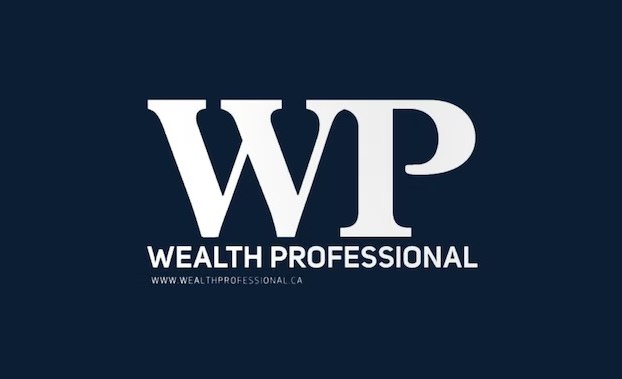The Globe and Mail:
Why private alternatives are the future of asset allocation
Author: Travis Forman – Special To The Globe and Mail | March 23, 2021
Image: Svetazi/istockphoto / Getty Images
For the past two decades, there has been a fundamental shift in prudent capital investment philosophies. Pension, endowment, and ultra-high-net-worth investors have been allocating more of their assets toward alternative investments because of chronically low bond yields, central bank intervention, and the threat of sky-high stock valuations.
Investors have been told for years that diversification enhances portfolio stability, but diversification itself has taken on a new meaning. The COVID-19 pandemic along with the recent retail trading frenzy revealed a series of “winner” and “loser” asset classes, as well as the unrivaled and steady performance of one particular asset class – private alternative investments.
While alternative assets are not new, they’re still considered to be non-traditional and unconventional to many investors. Nevertheless, there was a clear sign from institutional investors in 2020: As long-standing and firm believers of the alternatives space, they prioritized even heavier allocations to these investments.
That’s because of this asset class’s performance and the consensus that alternatives will achieve higher returns and meet future obligations, while also being able to protect against excessive downside risk. It’s an indication for retail investors to follow suit.
After all, if pension and endowment portfolio managers use private alternative investments for these reasons, should Canadians not approach their retirement savings with a similar philosophy?
Let’s consider the benefits that alternatives provide to investment portfolios. First off, they have a low correlation with public equity markets and traditional fixed income. In addition, private alternatives generate consistent returns with lower volatility, protect portfolios from large drawdowns or losses, and provide better risk-adjusted returns.
Furthermore, an optimal portfolio is one that is well-diversified and inclusive of alternate sources of returns. Portfolios should include companies from different industries and countries to be considered truly diversified.
Within the catch-all term of private alternative investments, there are three subcategories that have shown to offer the best risk-adjusted returns: private debt, private real estate, and private equity.
Private debt, which are loans negotiated privately outside of the Tier 1 financial system, provides investors with senior secured positions in the capital stack, making private lending an increasingly attractive option for portfolio diversification because it provides equity-like returns without the volatility.
Let’s look at the volatility brought about at the start of the pandemic. Traditional asset classes such as core fixed income, for example, traded down by 5 percent to 10 percent while returns for private debt remained positive.
With bond yields at historical lows, traditional fixed income will continue to lag in the short term. If inflation returns and interest rates begin to rise, that may bring further challenges, thus leaving the fixed-income market likely unattractive for the foreseeable future. That makes private debt a viable option for investors who are looking for security and yield.
Private real estate, like private debt, has also shown formidable upside – specifically within the key areas of multi-family residential, industrial and self-storage. All are poised to continue to perform well during the course of the year.
At the peak of the pandemic, private multi-family residential performed well and did not see the drawdown that public real estate did.
In the industrial space, distribution and data centres are hot because of demand from e-commerce, and inventory is not forecasted to stabilize any time soon. Finally, the capitalization rates on storage are far greater than on multi-family residential. That can be expected to compress, resulting in good capital growth.
Overall, that demonstrates why most institutional investors allocate typically 10 per cent to 20 per cent of their assets to private real estate.
Private equity is typically the largest sleeve of a private alternative allocation for institutional portfolios. It appears the capital commitment will continue. According to Preqin Ltd., which provides market data and insights on alternative assets, private equity will be the fastest growing alternative asset class through to 2025.
Prudent investors have shown favouritism toward this asset class because it has demonstrated an ability to outperform public equities, even in market downturns, with less volatility. Although the private equity space is not immune to recessionary environments, it has proven to be more immune to sensationalism and irrational investor behaviour compared with public equity markets.
Today, more companies than ever are choosing to wait longer before going public, ultimately coming to market more fully valued. For example, Uber Technologies Inc. UBER-N -3.95%decrease came to market valued north of US$80-billion. As an investor, would not it make sense to be an owner when that US$80-billion was created privately?
The long-standing belief in the investment community is that taking more risk (measured by standard deviation) results in increased returns. However, data are certainly starting to look opposite to that. Incorporating a healthy allocation of 20 per cent or more to alternative assets like private debt, private real estate and private equity concurrently lowers risk while increasing returns.
As more Canadians approach and enter retirement and begin drawing down on their investment nest eggs, finding the optimal risk and reward balance is paramount for portfolio success.
Investing in private alternatives is investing like a pension. This approach has shown to be prudent, as it has created probable and predictable results, ultimately improving retirement for Canadians.
Travis Forman is senior vice president, portfolio manager and investment advisor at Harbourfront Wealth Management in Surrey and Kelowna, B.C.



A Temporary Truce: The US-China Trade War
14 May 2025